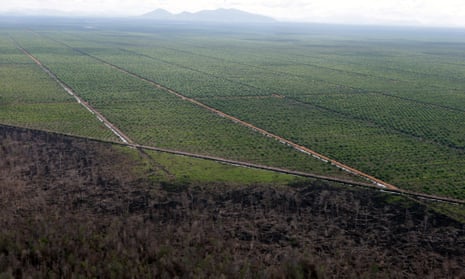Indonesia’s economy took a $16bn hit this year from forest fires that cloaked south-east Asia in haze, more than double the sum spent on rebuilding Aceh after the 2004 tsunami, according to the World Bank.
The fires and resulting haze are an annual occurrence caused by slash-and-burn land clearance. But the blazes in 2015 were the worst for some years, causing air quality to worsen dramatically and many to fall ill across the region.
In a quarterly update on the Indonesian economy, the World Bank said the fires had devastated 2.6 million hectares (6.4m acres) of forest and farmland across the archipelago from June to October.
The cost to south-east Asia’s biggest economy is estimated at 221 trillion rupiah ($16.1bn), equivalent to 1.9% of predicted GDP this year, it said.
In contrast, it cost $7bn to rebuild Indonesia’s westernmost province of Aceh after it was engulfed 11 years ago by a quake-triggered tsunami, with the loss of tens of thousands of lives, the bank said.
“The economic impact of the fires has been immense,” said World Bank Indonesia country director Rodrigo Chaves.
Fire has long been a popular way of quickly and cheaply clearing land on Indonesia’s Sumatra island and the Indonesian part of Borneo, to make way for lucrative palm oil plantations.
But the fires burn out of control and produce noxious haze during the months-long dry season, particularly when started on carbon-rich peatland.
The World Bank said that if every hectare burned in 2015 were converted to palm oil, the value would be about $8bn. Indonesia is the world’s biggest producer of the oil, used in numerous everyday goods from biscuits to shampoo.
“So on the one hand 16 billion dollars cost to the public, on the other hand, eight billion dollars – lots of money – to a handful of individuals,” said World Bank environmental specialist Ann Jeannette Glauber.
The estimated costs are based on an analysis of the types of land burned and take into account the impact on agriculture, forestry, trade, tourism and transportation, as well as short-term effects of the haze such as school closures and on health.
More than half a million people suffered acute respiratory infections in Indonesia, while many in neighbouring Singapore and Malaysia also fell ill.

Comments (…)
Sign in or create your Guardian account to join the discussion